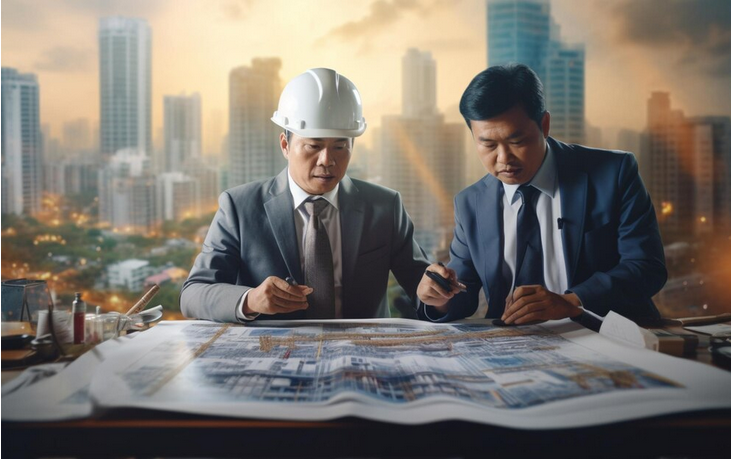Drainage design is a pivotal aspect of civil engineering, often overlooked by the untrained eye, yet fundamental to the success of any construction project. It is a complex blend of art and science, integrating engineering principles, environmental considerations, and aesthetics to create efficient, sustainable, and visually pleasing drainage systems. In this guide, we will delve into the art and science of drainage design, offering insights from a specialist in the field, covering its core principles, challenges, and the importance of this discipline in modern infrastructure development.
Understanding the Essence of Drainage Design:
Drainage design, at its core, involves the planning and engineering of systems to manage water effectively. The primary objectives of a well-executed drainage design are as follows:
Mitigation of Flooding: The primary role of drainage systems is to control water, ensuring that excess rainwater is transported away from urban and rural areas, minimizing the risk of flooding.
Prevention of Erosion: Effective drainage design safeguards against soil erosion, which can destabilize foundations and pose threats to the structural integrity of infrastructure.
Environmental Considerations: It's vital to address environmental aspects, such as preventing pollutants from entering natural water bodies and conserving water resources.
Infrastructure Protection: Drainage design plays a critical role in safeguarding roads, buildings, and other structures from the damaging effects of standing water.
Balancing Art and Science in Drainage Design:
Engineering Principles: The science of drainage design entails a deep understanding of hydraulic engineering, hydrology, and soil mechanics. Engineers employ calculations and simulations to ensure that water is efficiently managed, preventing waterlogging and erosion.
Environmental Considerations: The art of drainage design comes into play when incorporating environmentally friendly features like green infrastructure, which includes permeable pavements, vegetated swales, and bio-retention areas. These eco-friendly solutions not only manage water effectively but also enhance the aesthetics of the surroundings.
Aesthetics: Drainage design, when implemented with an artistic touch, can blend seamlessly with the overall aesthetics of an area. This not only improves the visual appeal but also harmonizes with the natural landscape.
The Role of a Specialist in Drainage Design:
A drainage design specialist is an engineer with expertise in the intricacies of water management, soil mechanics, and environmental science. Their role involves:
Hydraulic Analysis: Conducting hydraulic analyses to determine the flow of water, identifying potential issues, and calculating the required capacity of drainage systems.
Sustainable Practices: Integrating sustainable practices such as the use of environmentally friendly materials, low-impact development, and efficient water treatment methods.
Compliance and Regulations: Ensuring that drainage design meets local, state, and federal regulations to protect water quality and the environment.
Cost-Effective Solutions: Identifying cost-effective drainage solutions that offer long-term benefits while minimizing the impact on budgets.
Challenges in Drainage Design:
Urbanization: In urban areas, limited space and dense development pose a challenge for drainage design. Specialists must find innovative ways to manage water effectively in confined spaces.
Climate Change: Changing climate patterns bring more frequent and intense rainfall, challenging existing drainage systems. Specialists must design systems that can handle these evolving weather conditions.
Sustainability: The demand for sustainable drainage solutions necessitates the incorporation of green infrastructure. Specialists must balance traditional engineering practices with ecologically sound design.
Maintenance: Even the best-designed drainage systems require regular maintenance. Ensuring that maintenance is conducted effectively is a significant challenge in the field.
Importance of Drainage Design in Modern Infrastructure:
Infrastructure Durability: Effective drainage design is critical for the longevity of infrastructure. Preventing water-related damage, such as soil erosion and foundation instability, ensures that structures remain durable and safe.
Environmental Responsibility: Drainage design that incorporates eco-friendly practices helps protect the environment by preventing pollutants from entering natural water bodies, conserving water resources, and promoting green spaces.
Resilience: In an era characterized by changing climate patterns, drainage design that accounts for climate resilience is essential. This helps ensure the functionality of infrastructure during extreme weather events.
Economic Efficiency: Proper drainage design is cost-effective in the long run. It reduces the need for frequent and costly repairs, saving resources and taxpayer money.
Conclusion:
The art and science of drainage design represent a harmonious blend of engineering principles, environmental considerations, and aesthetics. It is an essential component of modern infrastructure development, encompassing the prevention of flooding, erosion control, environmental responsibility, and infrastructure longevity. A specialist in drainage design plays a pivotal role in this field, ensuring that water is managed efficiently and sustainably while adhering to regulatory standards.
Challenges in drainage design include urbanization, climate change, sustainability, and maintenance, which require innovative solutions and a commitment to long-term infrastructure resilience. As modern society places a growing emphasis on infrastructure sustainability and environmental responsibility, mastering the art and science of drainage design is crucial for creating infrastructure that is not only functional but also visually pleasing, ecologically sound, and resilient in the face of a changing climate.





Comments